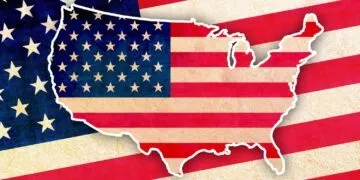Unofficially nicknamed the “Show Me State” but also known as “The Cave State,” “Mother of the West,” “The Ozark State,” and “The Lead State,” Missouri was the 24th state to join the United States of America on August 10, 1821.
It has a population of 6,137,428 people (as of 2019), making it the 18th most populous state. Missouri is bordered by Kansas, Iowa, Kentucky, Illinois, Tennessee, Arkansas, Oklahoma, and Nebraska.
With 69,715 square miles of land and water, it is the 21st largest state.
The capital of Missouri is Jefferson City, situated in the center of the state.
Now that the fast facts are behind us let’s look at the more interesting facts about Missouri!
There’s no official way to pronounce Missouri.
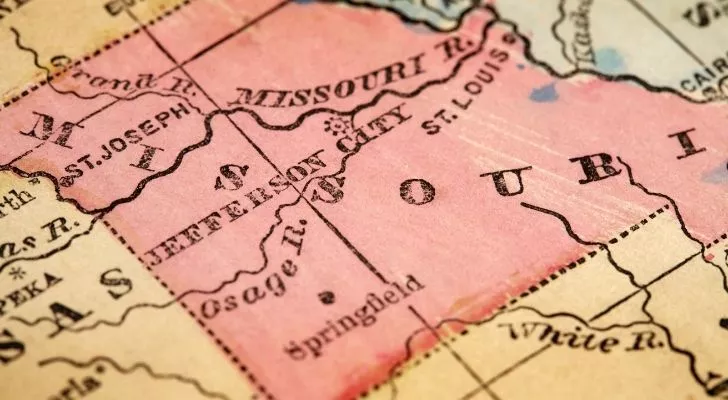
It’s pretty common for some places around the world to have difficult-to-pronounce names that end up confusing almost all who try to speak it.
Missouri is no exception to this concept, but it does take it to a whole new level. Missouri is the only US state that doesn’t have one single correct pronunciation.
Missouri locals pronounce their state’s name in a range of ways, such as “Missoor-ee,” “Mussour-ah,” and even “Mizzoor-ee.”
Linguists have long attempted to identify why different people pronounce the state differently, and they’ve found no logical explanation.
Instead, they confirmed that Missouri locals’ varying pronunciation doesn’t come from geographical or cultural backgrounds.
Missouri doesn’t actually translate into “muddy water.”
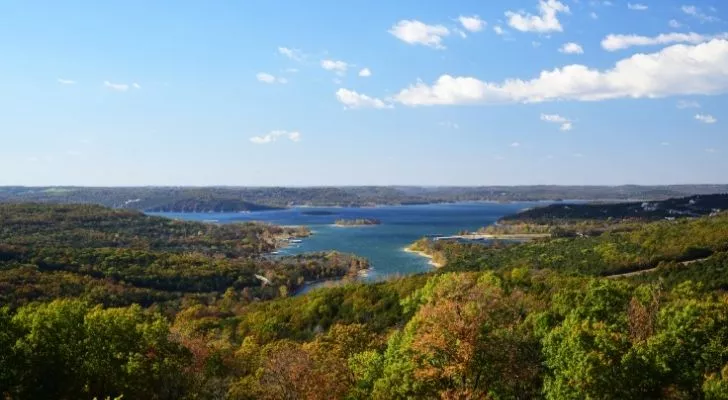
For a long time, people have claimed that Missouri roughly means “muddy water,” but it’s actually completely wrong.
Instead, the state of Missouri was named after a Siouan Native American tribe called Missouri.
The most likely explanation for Missouri’s translation is that it was the name given by neighboring tribes, who spoke a Miami-Illinois language. And it roughly translates to “those who have dugout canoes.”
Missouri has no official state nickname.
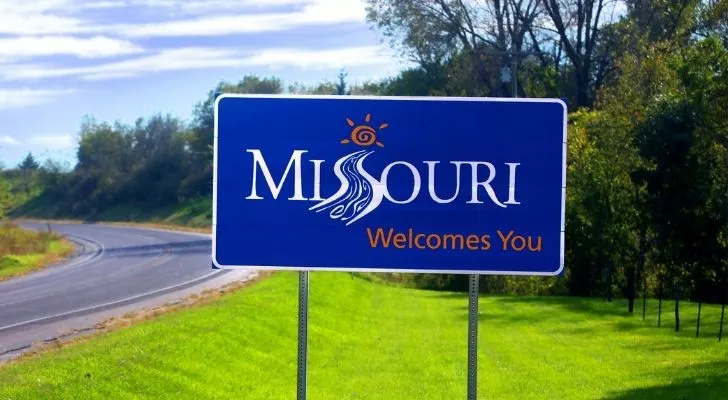
The state has many nicknames, but none have been made official. The closest Missouri has is the most popular unofficial nickname, “Show Me State,” which has even made it onto the state’s license plates.
The origins of this nickname are a little cloudy.
One possible source of the nickname comes from something said by Missourian Congressman Willard Vandiver, where he declared, “frothy eloquence neither convinces nor satisfies me. I am from Missouri. You have got to show me.”
It’s possible that Vandiver didn’t invent the phrase; instead, he simply popularized it.
A possible early origin comes from the mining town of Leadville, Colorado, in the 1890s.
Missourian miners had been brought in to work the town’s mines after the local workers went on strike.
As they were used to different mines, they needed more explanation than usual, so the local mine supervisors started going around saying, “That man is from Missouri. You’ll have to show him.”
People have lived in Missouri for at least 10,000 years!
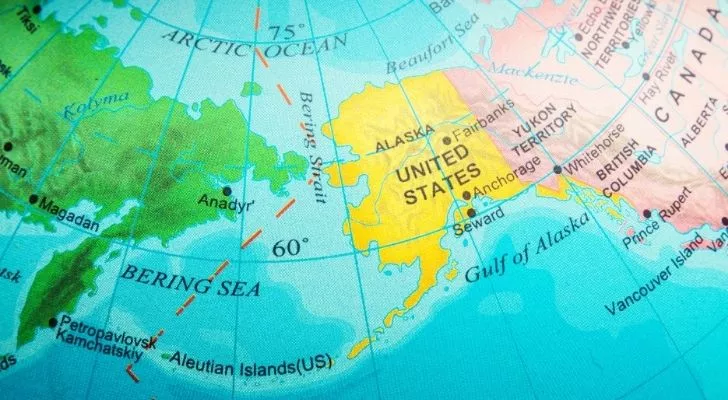
America was settled by the Paleo Indians, beginning around 12,000 BC.
The Paleo Indians first came to Alaska, North America, from the far east of modern-day Russia via the Bering Strait, which was a land bridge between the two continents due to lower sea levels.
Archaeological evidence of Paleo-Indian presence dating back to 12,000 BC can be found throughout the USA.
The first evidence of anyone settling down for extended periods of time in the state goes back to 7000 BC. However, even these early people would have been primarily hunter-gatherers.
By around 1000 BC, complex cultures such as the Mississippi Culture had arisen that had a number of cities with more than a thousand residents.
This civilization had more or less collapsed by the time Europeans arrived in 1673.
The first Europeans to reach Missouri were the French.
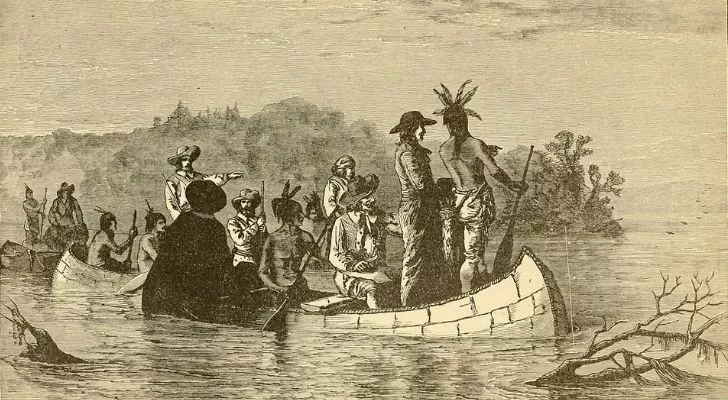
The first Europeans to pass through the region now known as Missouri were Jacques Marquette and Louis Jolliet, a Jesuit priest and an explorer, respectively.
In 1673 they set out from Michigan in canoes with just five other men. They traveled down the Mississippi to within 435 miles (700km) of the Gulf of Mexico during their journey before turning back.
They mapped the areas they passed through extensively.
The first proper French settlement, St. Genevieve, was founded much later in 1750, which at the time was in La Louisiane (later Louisiana), a region of New France.
Missouri’s land changed many times before it became a US state.
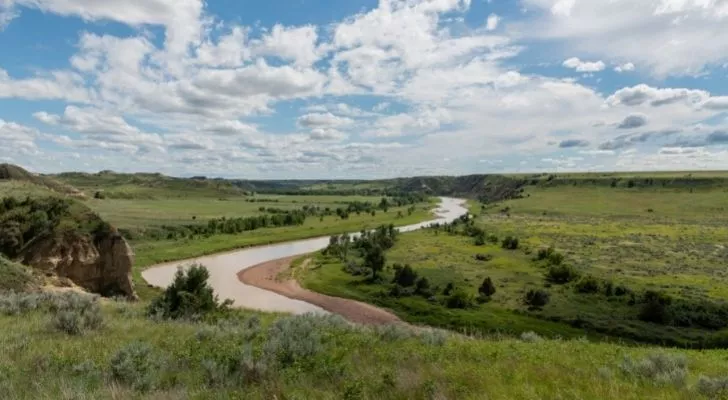
Shortly after France founded St. Genevieve, the French and Indian war broke out, which France ultimately lost to Britain in 1763.
Near the end of the war, France gave control of the La Louisiane to Spain, who developed the region more with the aid of French immigrants fleeing British rule.
Spain controlled and developed the region all the way through to 1800, at which time they aided America during the American Revolution.
Napoleon Bonaparte retook control of Missouri for France in 1800 but soon ended up selling it to the USA as a part of the Louisiana Purchase in 1803.
Missouri was made a part of the District of Louisiana in 1804, which then became Louisiana Territory in 1805.
Louisiana Territory was then split in 1812, with the northern parts becoming Missouri Territory.
It wasn’t until August 10, 1821, that Missouri joined the Union as the 24th state.
Missouri went to “war” with Iowa over a border dispute.
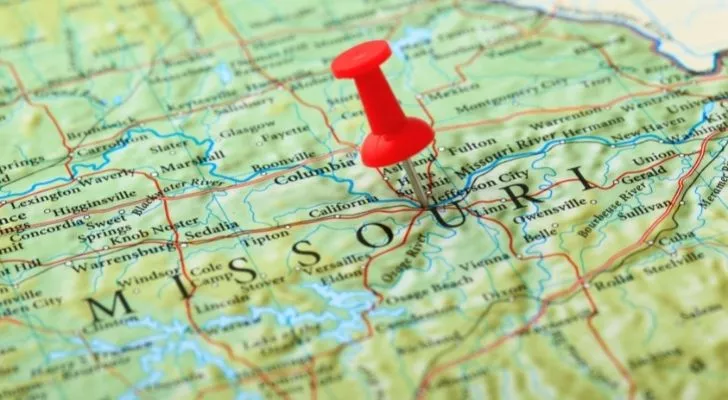
The original survey, which defined Missouri’s northern border with Wisconsin Territory, was quite vague, and as such, Missouri attempted to redefine it to its advantage in 1837.
In 1838 Iowa formed out of Wisconsin Territory, at the same time that Missouri was conducting the new survey, which claimed a 9.5 mile (15.3km) wide strip of Iowa that ran the length of the whole northern border.
Later that year, when tax agents from Missouri tried to collect tax from this region, they were chased away with pitchforks.
According to local legends, the tax agents cut down three honey bee trees and collected their honey in lieu of payment. This started the Missouri-Iowa “Honey War,” with both sides sending a militia to claim the region.
The dispute ended up being settled by Congress much later in 1849, declaring the region to be a part of Iowa after all.
Missourians fought on both sides of the Civil War.
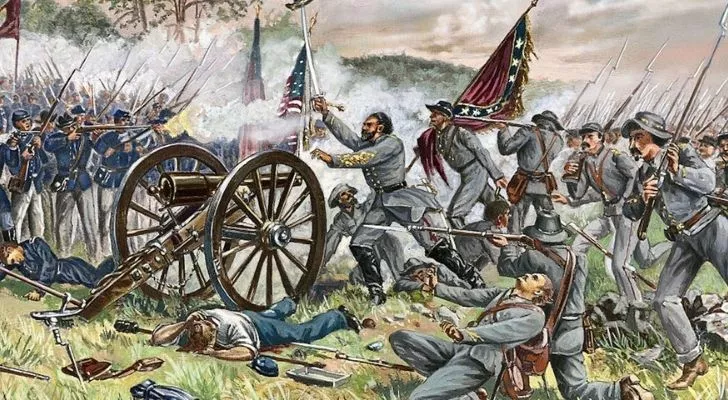
When a number of southern US states began to secede from the Union in 1861, Missouri put together a group of people responsible for deciding the fate of the state, whether to stay in the Union or join the Confederate states.
The vote was decidedly in favor of staying in the Union, but Claiborne F. Jackson, the Governor of Missouri, disagreed.
Instead, he appointed the president of the secession convention, Sterling Price as the leader of the state’s militia and prepared to fight for the cause.
After fleeing Jefferson City, the pair and their followers joined forces with Confederate troops from Arkansas and Texas and fought against the Union army.
Mark Twain was born in Missouri.
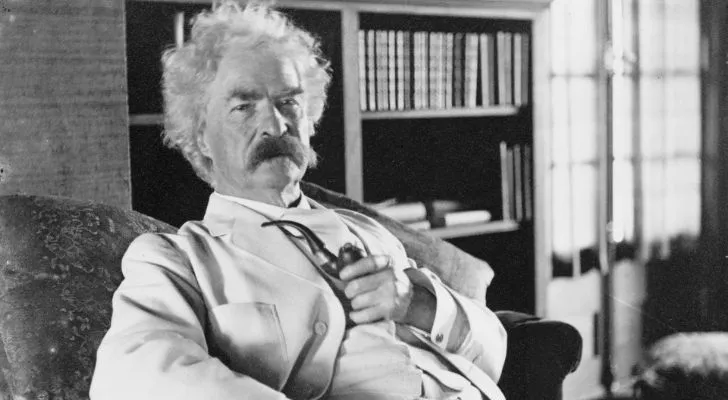
He was born Samuel Langhorne Clemens on November 30, 1835, and only took up the name of Mark Twain for his writing career later in life.
Twain was born in the town of Florida, Missouri, but grew up in a town nearby called Hannibal.
In his early career years, Twain worked for some small news agencies before leaving everything to become a riverboat pilot for 18 months on the Mississippi River.
It wasn’t until much later in his life after the Civil War that he would write his masterpieces, largely drawing on his own experiences during his time on the Mississippi River.
There are apparently more fountains in Kansas City, Missouri, than in Rome.

It’s one of those “facts” that are too weird not to be true. With that being said, no one actually knows for sure, although Kansas City tour guides have been claiming it as God’s truth for some time now.
The problem is that no one has actually gone around and counted how many fountains there are in Rome, nor has anyone managed to come up with a correct count in Kansas City.
The City of Fountains Foundation has attempted to solve this problem by going around and counting them but came up with a disappointingly low number of 200 fountains.
The claim is that there are many more in various locations, such as inside private property.
So does Kansas City have more fountains than Rome? Whatever the answer, I doubt Rome’s citizens will lose any sleep over it!
The world’s first ready-made pancake mix was invented in Missouri.
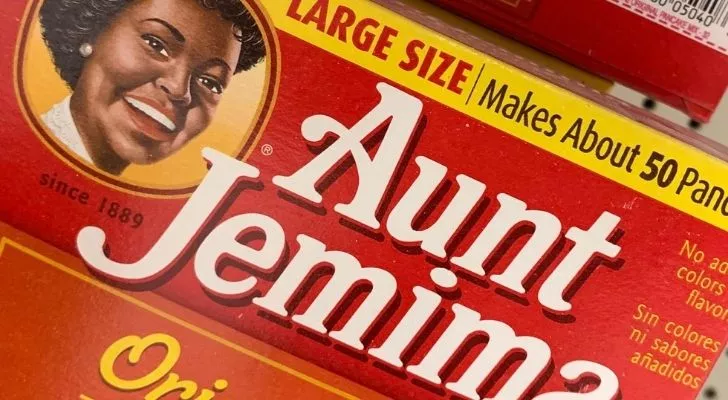
At the end of the 19th Century, there was a surplus of flour in St. Joseph, Missouri. Two entrepreneurial young folks from St Joseph’s had a brainwave that would forever change the breakfast food game.
They combined several simple, inexpensive ingredients such as flour, baking powder, cornflour, and salt. Then, they sold it as a self-rising pancake mix, the first known commercially available pancake mix in the world.
The mix was named Aunt Jemima’s Pancake Mix, and it hit shelves in 1889.
Missouri was hit by the deadliest tornado in US history.
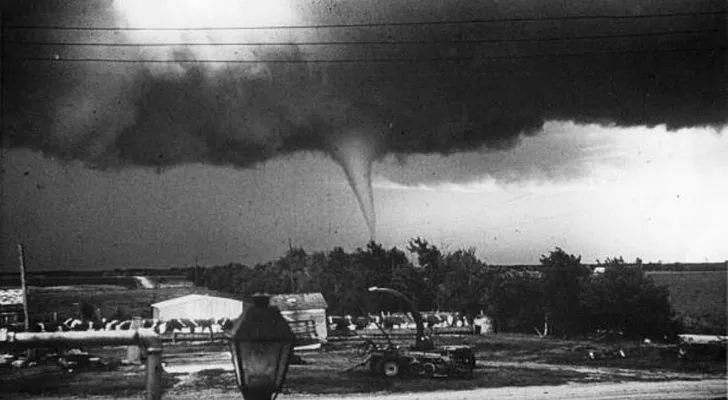
Missouri is pretty much smack-bang in the heart of Tornado Alley, a section of central US that runs from north to south which experiences more than its fair share of severe thunderstorms and tornadoes throughout the year.
With that in mind, it’s pretty unsurprising that Missouri bore witness to the deadliest tornado ever seen in the United States.
Known as the Tri-State Tornado, this destructive force gained power near Ellington, MO, on March 18, 1925.
It tore through Missouri, Indiana, and Illinois, cutting the lives of 695 people short and injuring over 2000 more.
It’s estimated that more than 15,000 homes were completely flattened, with many small towns simply never recovering.
Two of the most famous Wild West outlaws came from Missouri.
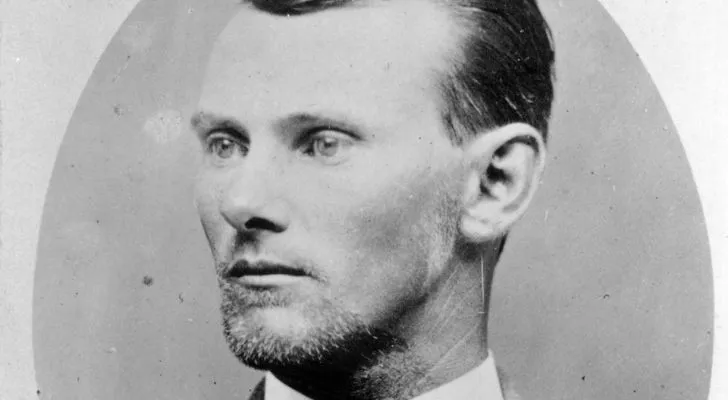
Jesse Woodson James and Alexander Franklin “Frank” James were born in Kearney, Missouri, in the mid 19th Century.
They were raised with southern values, and as such, they both fought during the American Civil War for the Confederates.
Following the Confederate’s defeat, the brothers became outlaws to fight against the new Union way of life.
They actively robbed banks, stagecoaches, and trains over the course of 15 years and were followed for much of this by the famed Pinkerton Detective Agency.
Many people during this time followed the story of Jesse and Frank closely, either viewing them as murderous ex-Confederate scum or as heroes fighting for a lost cause.
Either way, wherever they went, there was always a trail of bodies left behind.
The first Olympic Games held in the US was in St. Louis, Missouri.
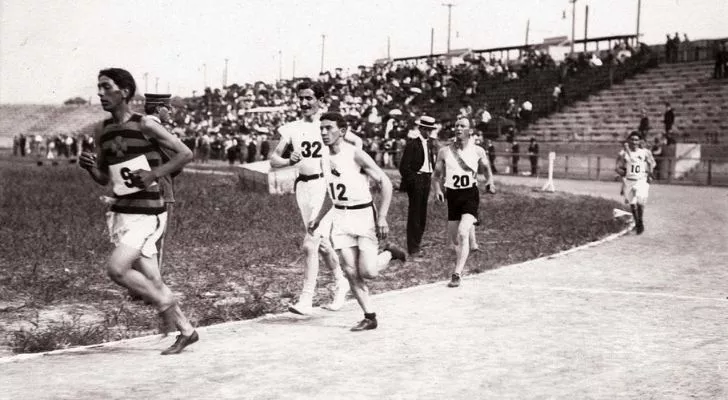
Held in 1904, it was actually the first time the Olympics had been held anywhere other than Europe!
The games were initially meant to be held in Chicago, but St. Louis kicked up such a fuss that the Olympic committee eventually changed the location.
1904 was a difficult time for international events, especially due to the Russo-Japanese war unfolding at the time and because the transatlantic flight hadn’t been invented yet.
What resulted was a very North American Olympic Games, with just 65 of the 651 participants hailing from outside of North America.
Missouri has a few straight-up bizarre laws.

The first odd law is known as the “brothel law,” which states that no more than four unrelated women can live in the same residence.
Although it was never revoked, we can see how this rule came about.
What we don’t understand is why worrying squirrels is apparently against the law. Are squirrels not allowed to worry, or are we not allowed to worry them?
On top of this, it’s illegal to intoxicate elephants, frighten babies, and honk another person’s horn in Missouri.
As one of the gateways to the Wild West, Missouri saw it all. The state had a pretty rough history, with it almost splitting in two during the Civil War.
These days though, Missouri is an absolutely beautiful state to live in or visit, with some fantastic national parks and thriving cities!


